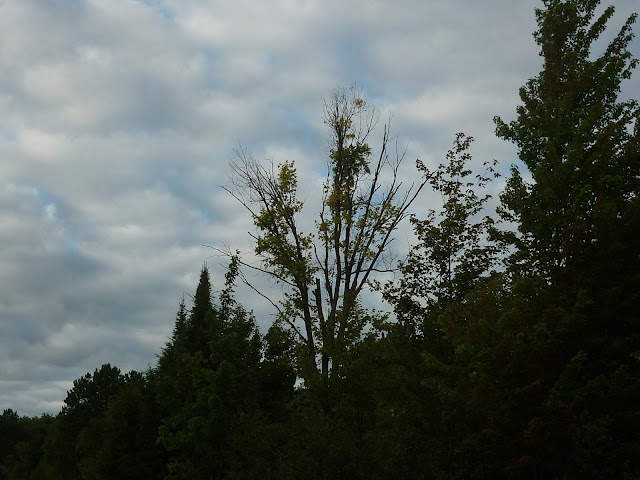 |
| Said Elm was immortalized on digital canvas from a location on Cedar Lake in Ontario. |
The American Elm (Ulmus Americana), that graceful, drooping tree that so delicately sticks up among the birches, alders, aspens, and spruce is definitely a creature of another world, one that looks alien among the landscape of the Canadian Shield. This amazing tree, which shades so many parks and avenues further south, can indeed grow here, just as it can grow in central Florida and the moderately arid parts of the Great Plains, but it does so at a disadvantage in regards to growing conditions. The gentle appearance of the tree certainly seems to hint at this; elms growing among the more rugged and savage Boreal conifers add an exotic tough to the landscape, clearly something that probably is there under generous conditions.
They certainly looked like they did not belong, even to a knowledge-thirsty six year old. Overall rarity was made even more interesting by the presence of the above elm to another mere yards away:
I kept wondering exactly what this tree was doing standing out among the Balsam Fir. By the time I was six and could manage reading decently in English, I looked in every tree book we had to try and explain what the lone elm was all about. As you can see, it has since deteriorated due to Dutch Elm Disease and now bears little resemblance to the healthier tree it once was, but even these days it still tends to stand out even among other dead trees. That it is still alive despite brutal winters which easily feature overnight lows in the minus forties (both scales) compounded with the disease is beyond me. The miracle is a good point to focus on, however, in considering "what belongs where". Boreal trees are certainly hardy, but more southerly varieties are hardly weak, being able to endure extremes of temperature over 120 degrees apart or more!
The meeting of north and south is thus less of a "holding on" and more of an acknowledgement of different forms of arboreal adversity. These elms grow here because they can, just like a Red Maple (Acer Rubrum) in the Everglades, a Ponderosa Pine (Pinus Ponderosa) in the desert elevations of the Mojave or even spruce at the arctic treeline. Trees such as these are a wonderful reminder of how tough life is on this continent, and how interconnected, yet diverse, our ecosystems are, much like the people who live here.
 |
| Yep, here she is again, just to the left of those two fir spires. |
Thus, "does not look like it belongs" is more like "yet a part of this forest".
In general, good places to see such mixes of the Boreal and Eastern North America are along the northern Great Lakes and northern Appalachians. While the overall feeling, say, of northern Maine, central Ontario, etc. is that the north has been arrived at, such places are still only the doorway of a much more expansive world that continues more than a thousand miles northward to the edge of the tundra. The above scenery, for instance, would seem positively southern to someone from extreme northern Quebec! Perspective is everything.


No comments:
Post a Comment